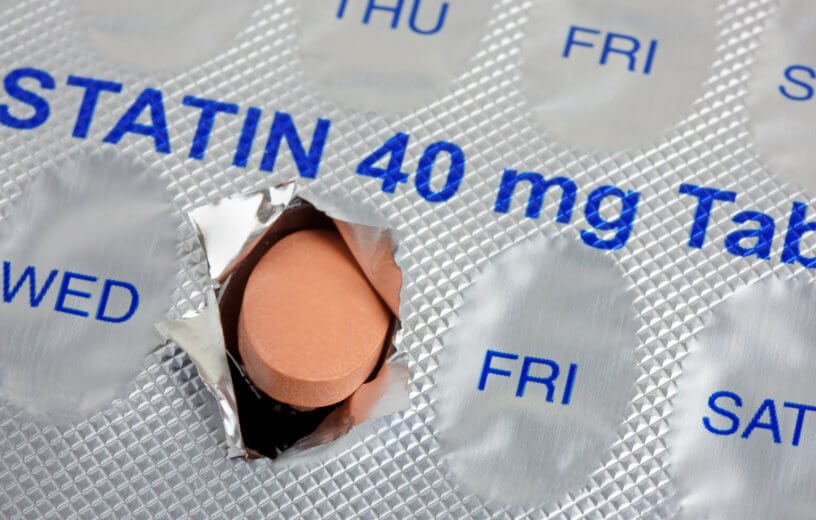BARCELONA, Spain — Don’t avoid taking statins over the concerns that cholesterol-lowering drug may cause muscle pain or weakness, a new study recommends. Researchers report that the benefits of statins in preventing cardiovascular disease far outweigh the risks of muscle-related side-effects.
“For most people taking a statin, any muscle-related symptoms they experience are not likely to be caused by the drug. The known protective effects of statins against cardiovascular disease greatly exceed the slightly increased risk of muscle symptoms,” says principal investigator Professor Colin Baigent, director of the Medical Research Council Population Health Research Unit at the University of Oxford, in a media release.
“For example, for every 1,000 people taking a moderate intensity statin, the treatment would cause 11 generally mild episodes of muscle pain or weakness in the first year with no significant excess in subsequent years. Over a five year period, statins typically prevent 50 major vascular events in those with pre-existing vascular disease, and 25 major vascular events in those with no pre-existing vascular disease, with longer treatment yielding larger benefits.”
1 in 4 statin users may experience muscle pain
Statin therapy is an effective way to prevent cardiovascular disease, the world’s number one killer. Millions of people worldwide take statins, but some concerns have come to light in recent years regarding their potential for causing muscle pain or weakness. Consequently, some heart disease patients are wary of the treatment. Study authors set out to ease those worries and resolve the uncertainties surrounding the possible effects of statins on muscles.
This project was an individual participant data meta-analysis, consisting of all muscle symptoms recorded during randomized blinded double-blind trials of statin therapy.
In all, researchers assessed data provided by 23 trials from the Cholesterol Treatment Trialists’ (CTT) Collaboration, encompassing information on nearly 155,000 patients. All of those trials featured at least 1,000 patients and covered at least two years of scheduled treatments. Scientists collected data pertaining to adverse events across individual participants using 19 randomized trials comparing statin therapy to placebos (123,940 patients), as well as four additional trials focusing on more intensive versus less intensive statin therapy approaches (30,724 patients).
The research team analyzed all available data examining adverse effects reported by patients taking part in the clinical trials. They also examined other datasets as well, including the timing of the trials, reasons for stopping treatment, use of any other medications, and any additional health issues or pre-existing conditions.
In the 19 trials focusing on statin treatment versus a placebo, a total of 16,835 patients (27.1%) in the statin group and 16,446 (26.6%) in the placebo group reported muscle pain or weakness over the course of a 4.3-year follow-up period.
Most muscle pain cases are not the result of taking statins
During just the first year, the study recorded a seven-percent relative increase in muscle pain or weakness among those taking statins, or 11 reports for every 1,000 person years. For the remainder of the follow-up period however, study authors did not find any excess risk. Over the course of that first year, only one in 15 reported cases of muscle weakness or pain was attributable to statin therapy.
The four trials focusing on more intensive versus less intensive statin therapies revealed that high-intensity treatment plans (including atorvastatin 40 to 80 mg daily or rosuvastatin 20 to 40 mg daily) resulted in a larger relative increase in the rate of muscle pain or weakness. The rate ratio for high-intensity regimens was 1.08, meaning muscle pain was eight percent more likely. Meanwhile, the rate ratio for more moderate statin treatments was only 1.02, or two percent higher.
“Muscle symptoms such as pain or weakness were experienced by similar numbers of people in the statin and placebo groups. Statins were not the cause of muscle pain in more than 93% of patients who reported symptoms. Statin therapy marginally increased the frequency, but not the severity, of muscle-related symptoms. The small excess risk of muscle symptoms occurred principally during the first year after commencing therapy,” Prof. Baigent explains.
“The results should help doctors and patients to make informed decisions about whether to start or remain on statin therapy. Information provided to doctors and patients should be reviewed in light of our findings, including drug labelling and guidelines.”
The research team presented their findings at ESC Congress 2022.


I have been taking Lipitor for over 5 years now ,and I can only say I feel really good. My Cholesterol was over 200 ,and now it is under 150!!
Do not like taking statins, speaking for myself.
The muscle pain in lower back is insidious.
For 38 years have tried every statin there is, and go off them when I have to take crlebrex for relief of pain from statins. Everyone know their own body. Too many meds.
Glad it is working for others.